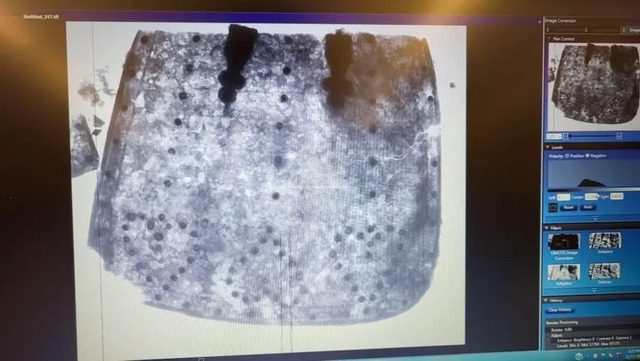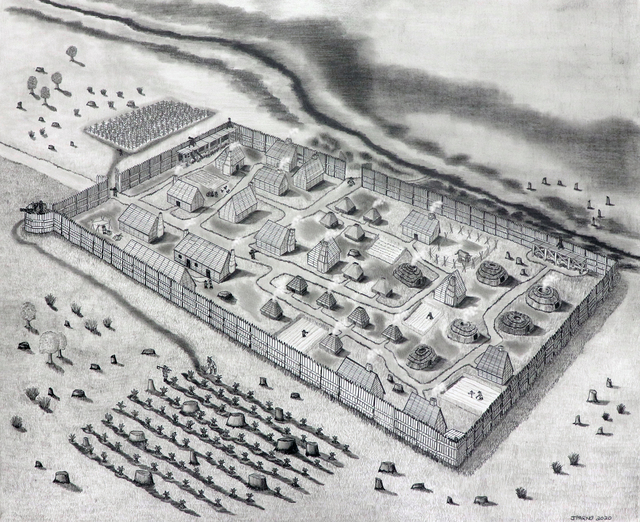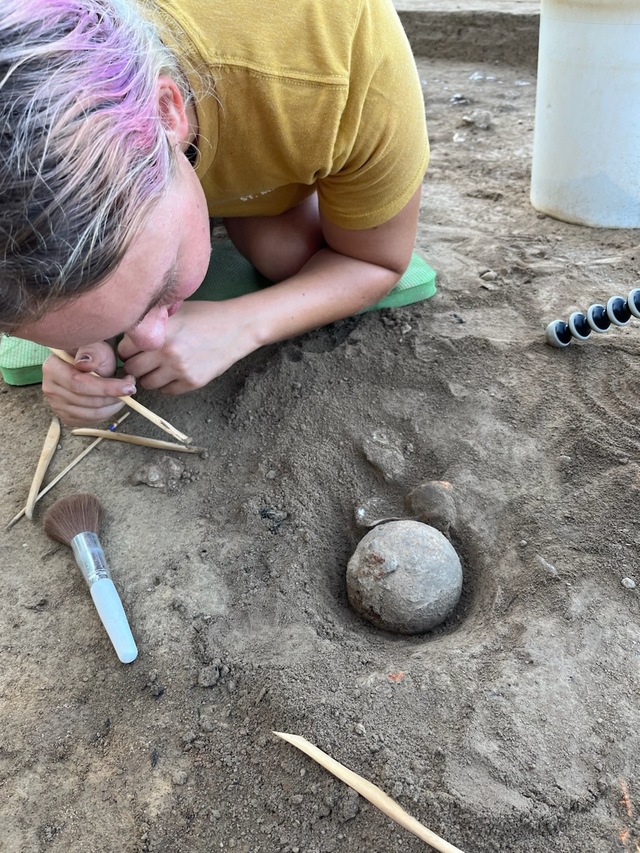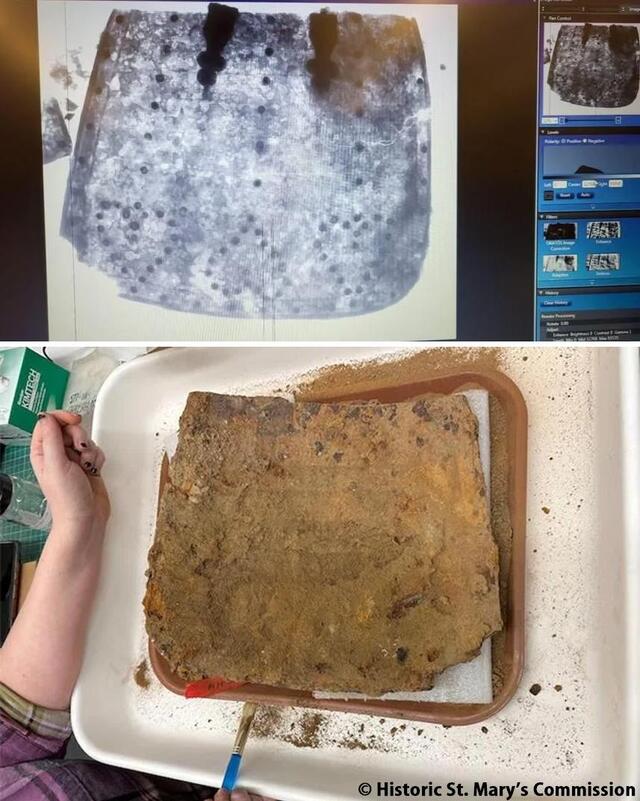A remarkable piece of colonial-era armor has been uncovered at Historic St. Mary’s City, Maryland, offering valuable insights into the lives and challenges of early European settlers. Discovered during excavations at the site, this rare find—a tasset, designed to protect the wearer’s thighs—sheds light on the practical adaptations of colonists in their new environment.
The Discovery of the Tasset
Initially appearing as an unassuming fragment of rusted iron, the artifact’s true significance came to light after X-ray imaging revealed its intricate details. The tasset features steel bands and decorative rivets, including three heart-shaped designs typical of 17th-century craftsmanship.

These decorative elements not only underscore the artistry of the time but also indicate the armor’s symbolic value. As Travis Parno, director of research at Historic St. Mary’s City, explained, the colonists likely found the tassets impractical in Maryland’s hot and humid climate. “They’re heavy. It’s a hot, humid environment. So you get rid of the tassets … You keep your breastplate, though, because that’s protecting your core,” he noted.

The discovery highlights the settlers’ prioritization of essential protection over secondary armor components as they adapted to the harsh conditions of the New World.
Adaptation in Colonial Life
The early settlers faced significant challenges as they adjusted to Maryland’s climate and environment. While tassets were designed for battle, their weight and heat retention made them ill-suited for the region. This practical decision to discard less vital armor underscores the settlers’ ingenuity in navigating their new surroundings.
At the same time, the retention of breastplates reflects the ongoing need for protection against potential conflicts, whether with local Indigenous groups or rival European powers. This balance between practicality and security offers a glimpse into the settlers’ priorities and daily realities.

Previous Findings at Historic St. Mary’s City
The tasset is not the only fascinating artifact unearthed at the site. Excavations have yielded a range of items, from scissors and musket parts to decorative metal braids and glass beads. These findings paint a vivid picture of life in the early colony, revealing both the settlers’ daily tools and their trade relationships with Indigenous peoples.
One particularly poignant discovery was the skeletal remains of a teenager, offering a personal connection to the individuals who lived—and died—during this tumultuous period. Additionally, archaeologists uncovered the foundations of a large building, likely a storehouse. The absence of a fireplace suggests its use as a commercial or military structure, further emphasizing the settlers’ focus on establishing essential infrastructure.
Significance of Historic St. Mary’s City
Founded in 1634, Historic St. Mary’s City holds a unique place in American history as Maryland’s first European settlement and its capital for six decades. The fort, built by the first colonists, serves as a window into the early colonial period, showcasing both their struggles and achievements.
The site also highlights the complex interactions between European settlers and Indigenous peoples, offering valuable insights into the cultural and political dynamics of the time.

Future Research and Preservation
The discovery of the tasset is just one chapter in the ongoing story of Historic St. Mary’s City. Archaeologists plan to continue their excavations, focusing on uncovering more details about the colony’s early years and its relationships with the Indigenous communities of southern Maryland.
With support from institutions like the Historic St. Mary’s Commission, these efforts aim to preserve and share this rich history with future generations. By combining traditional excavation methods with modern technologies such as DNA analysis, researchers hope to uncover even deeper insights into the lives of Maryland’s first settlers.

Conclusion
The unearthing of the tasset at Historic St. Mary’s City serves as a powerful reminder of the ingenuity and resilience of early American colonists. As archaeologists continue to peel back the layers of history at the site, each discovery adds a new dimension to our understanding of this formative period.
Historic St. Mary’s City remains a vital link to the past, offering a tangible connection to the challenges, adaptations, and triumphs of America’s early settlers. Through ongoing research and preservation, the stories of these pioneers will continue to inspire and inform future generations.
